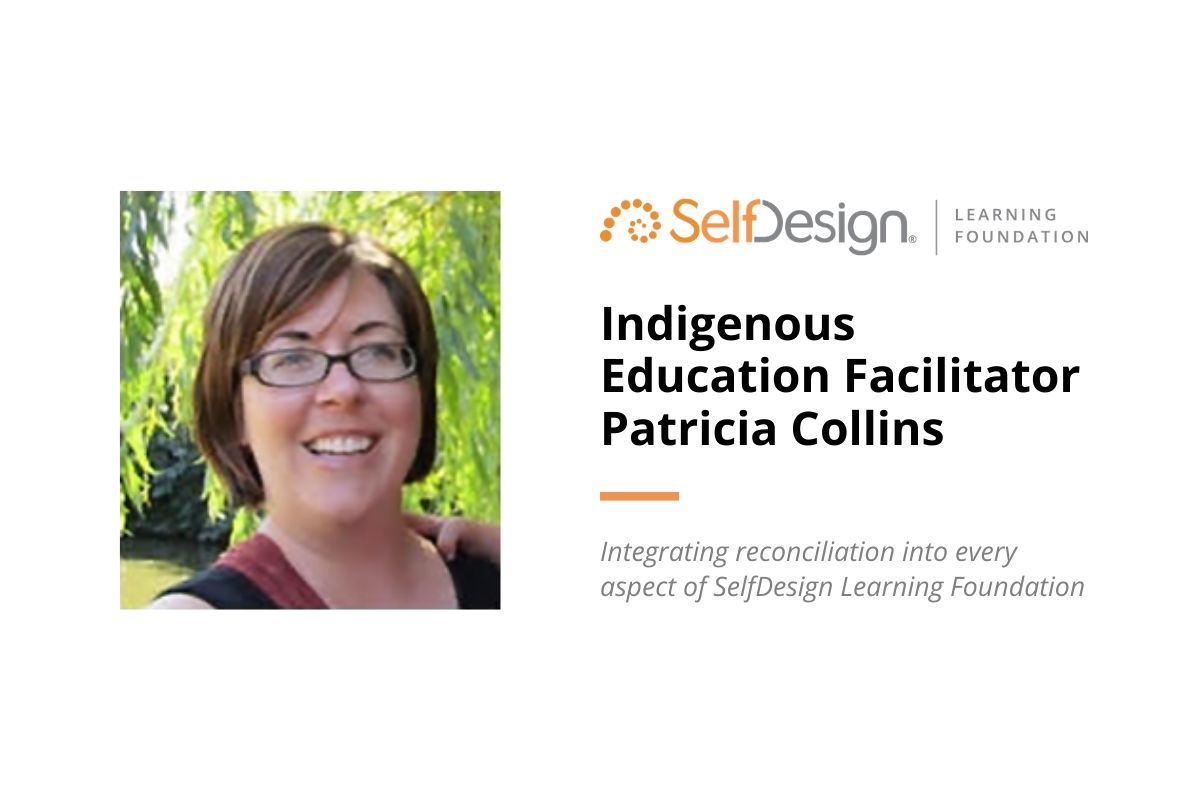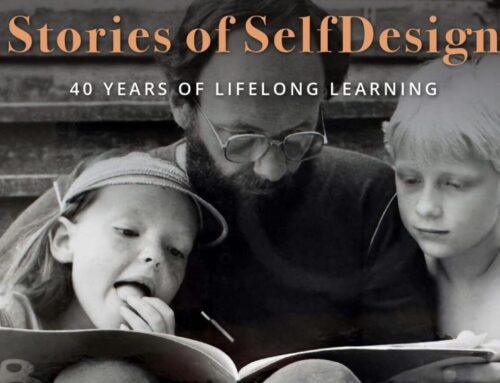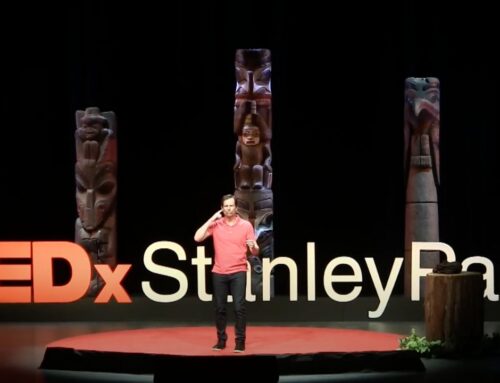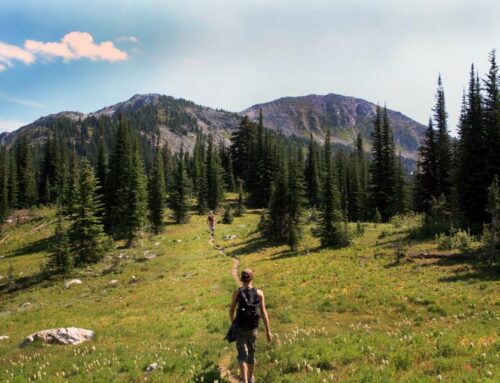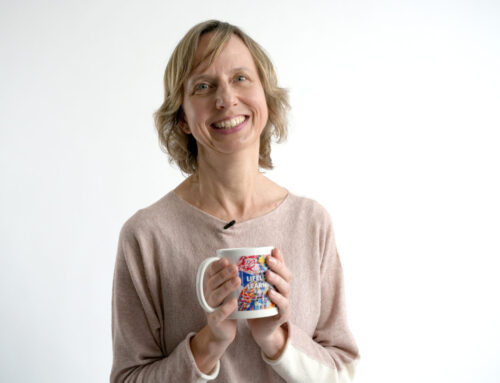Patricia Collins, SelfDesign Indigenous Education Facilitator, Learning Specialist and former learning consultant, didn’t start out with any thoughts of working in education.
Years ago, when a long-time family friend suggested to a very young Patricia that teaching might be the path she was meant to take, Patricia scoffed: “What do you mean I was born to be a teacher? Puh-lease!”
Instead, Patricia went on to choose a career in geosciences – a field that combines ecology and geology for the purpose of determining the status of landscapes before and after reclamation, assessing the potential of an area’s geology for mineral resource extraction, and undertaking related plant and animal surveys. For five years, she worked on projects around B.C.
Then it happened.
She was working near Nimpo Lake, in the Chilcotin (Tsilhqot’in) region of north-central B.C., when she witnessed a young person from the local Carrier First Nation risk their own life to save the life of another person.
“It was an act of such bravery, such complete selflessness and courage that, right then and there, I realized I wanted to work with young people,” Patricia says.
With her background in math and science and her blended Métis–British/New Zealand heritage, she entered the University of British Columbia’s Teacher Education program for science methodologies and took electives in the Indigenous Teacher Education Program. Soon, Patricia was on the path that had been predicted for her some 30 years earlier.
She has since worked throughout the province as an Aboriginal student advocate and Aboriginal Leadership teacher, and taught in one of BC’s First all-Indigenous public school programs. She sits as a local chair on the BC Teachers’ Federation Aboriginal Education Council, a professional group that provides support and training to B.C. certified teachers working to authentically integrate Indigenous perspectives and knowledge into curriculum delivery.
But SelfDesign Learning Community, she says, offers unique opportunities not available at most other schools. Here, she is encouraged to put into practice her learnings and her own growing knowledge about supporting students, furthering Indigenous education, applying the First People’s learning principles, and building bridges towards reconciliation with Canada’s Indigenous peoples throughout Turtle Island, the Indigenous name for North America.
“I had found that, in traditional, bricks-and-mortar schools, I wasn’t fully able to use this new knowledge that I had, and I really wanted to,” she says. “Philosophically, SelfDesign is very much in line with where my personal philosophy is about learning.”
Starting at SelfDesign as a learning specialist in math and science 10–12, Patricia broadened her work to become a learning consultant and to work with Support Education learners. She also facilitated Big Ideas workshops, ran themes for older learners, and contributed to the redesign of SelfDesign’s grade 10–12 program.
“I was working with one of the vice-principals on the new program, and I started to talk about, ‘There’s another lens that we need to be applying here. Have you heard about the First People’s Principles of Learning?’ … all of the stuff that I’d been involved in for years.”
Many of the First People’s Principles of Learning align with SelfDesign’s own philosophy and approach to learning. As with SelfDesign’s own values, they emphasize relationships and community, lifelong and real-world learning, and putting learners at the centre of their own learning.
That alignment facilitates Patricia’s work as SelfDesign’s Indigenous Education facilitator, a role she took on in 2017.
Patricia’s own background includes cultural ties to the Métis from Fort Qu’Appelle, Saskatchewan, and the British/New Zealanders. She acknowledges the efforts in striving as an adult to reconnect with these valuable traditions, as growing up she was not raised connected to the cultural wisdom of the Métis Nation.
She lives on the traditional and unceded territory of the Syilx people in B.C.’s Okanagan region and is learning about their traditions and teachings through their knowledge keepers. She also works closely with Secwépemc knowledge keepers and elders and from the Shuswap area. She has developed supportive, respectful relationships with knowledge keepers and elders from First Nations on Vancouver Island, the Lower Mainland, and elsewhere, too.
“I don’t speak for any particular group. I don’t speak for the Métis Nation or any community in particular,” she says. “I can share with you what I have learned and have been given permission to share on my own personal journey, but because I’m not a knowledge keeper or an elder, I can’t teach the traditions of any nation. I have so much learning to do, myself.”
For Patricia, seeing learners embrace opportunities to learn about Indigenous ways of seeing and being and build them into their learning and lives drives her to do more. “I’m so excited to share the traditions that I can share. It’s something I’m passionate about. It’s creative. It connects us to the land. It connects us to the traditions. At the workshops that I do, when the young people come into our shared speaking spaces, our discussion spaces, and say to me, ‘Wow, I learned something there’ – that’s the part that brings the most pleasure to me.”
All of which makes it sound like Patricia may, indeed, be meant to be a teacher.
“Yeah, my mom’s friend called it,” Patricia laughs. “She called it back when I was five years old or something ridiculous like that. And here I am, decades later, following that path!”
This article is part of a series about reconciliation and Indigenous learning at SelfDesign. To read other articles in this series, see our post on Reconciliation and SelfDesign: Building capacity for intercultural understanding, empathy and mutual respect. And be sure to check our blog in the coming weeks as we publish more in this series.

